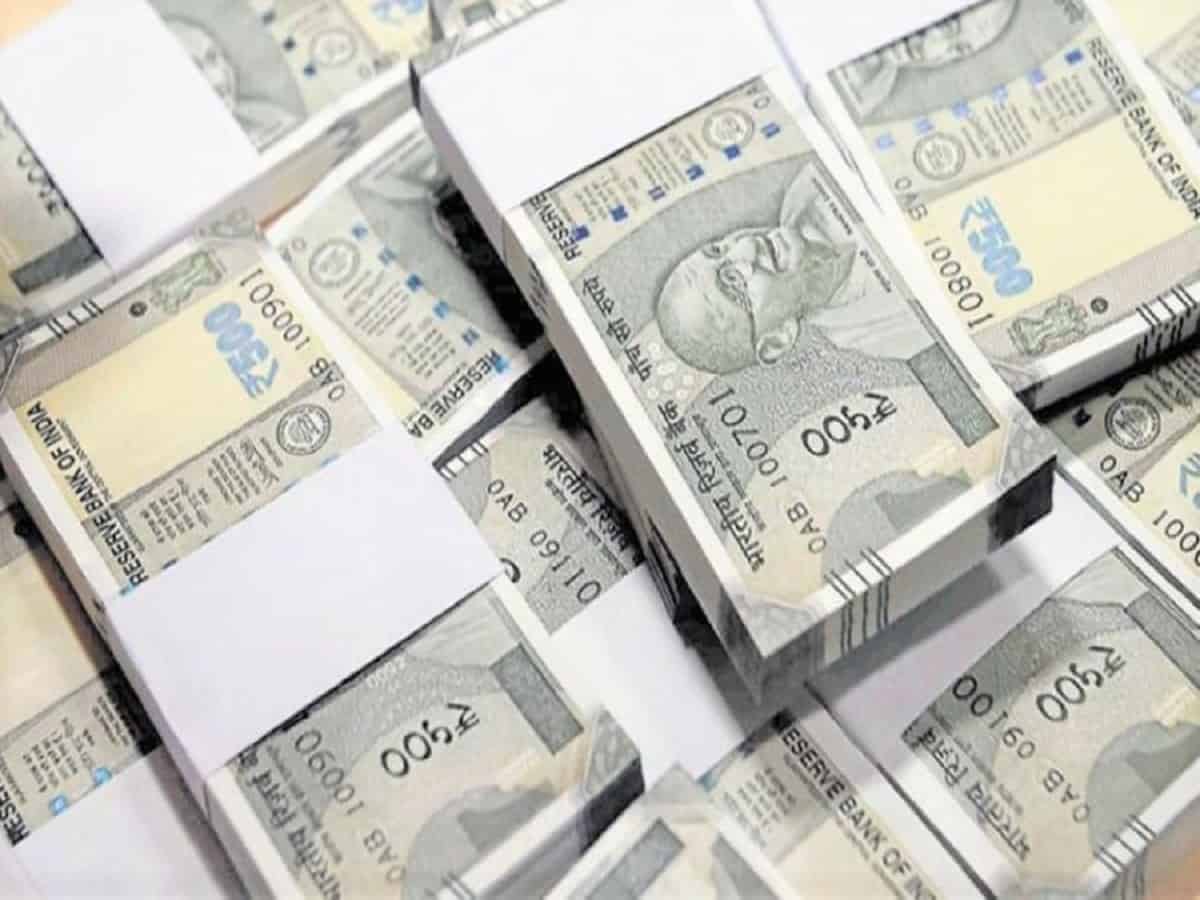Mumbai: Rising for the sixth straight session, the rupee spurted 24 paise to end at a nearly four-month high of 73.07 against the US dollar on the last day of the year on Thursday, supported by a weak American currency and rise in risk appetite.
Traders said market sentiments improved on hopes of global economic recovery following the rollout of COVID-19 vaccines and extraordinary fiscal and monetary stimulus.
At the interbank forex market, the domestic unit opened at 73.15 against the US dollar and witnessed an intra-day high of 73.01 and a low of 73.17.
The local unit finally settled at 73.07, registering a rise of 24 paise over its previous close.
The rupee had last closed above this level on September 2 this year, when it had finished at 73.03.
In the last six trading sessions, the Indian rupee has gained 77 paise.
Meanwhile, the dollar index, which gauges the greenback’s strength against a basket of six currencies, fell 0.09 per cent to 89.59.
“Rollout of vaccine strengthened hopefulness that surging infection cases may be checked. Additionally, UK granted emergency use authorization for vaccine developed by University of Oxford and AstraZeneca PLC,” said Saif Mukadam, Research Analyst, Sharekhan by BNP Paribas.
Furthermore, rupee may gain strength on consistent FII inflows. Rupee may trade in the range of 72.75 to 73.65 in next couple of sessions, he added.
On the domestic equity market front, the BSE Sensex ended 5.11 points or 0.01 per cent higher at 47,751.33, while the broader NSE Nifty slipped 0.20 points to 13,981.75.
Foreign institutional investors were net buyers in the capital market as they purchased shares worth Rs 1,135.59 crore on Thursday, according to provisional exchange data.
Brent crude futures, the global oil benchmark, fell 0.21 per cent to USD 51.52 per barrel.
“2020 has been a year where RBI played an extremely important role of keeping volatility in check. They sold aggressively when USD rose in value during COVID panic of March-April.
“Then they bought close USD 100 billion to prevent rupee from appreciating when inflows gushed to Indian capital markets,” said Anindya Banerjee, DVP, Currency Derivatives & Interest Rate Derivatives, Kotak Securities.
Banerjee further said “during 2021, if the global trend of USD remains downward, then USD-INR can decline towards 70.00 levels”.
Rupee dropped 2.39 per cent against the USD in 2020. This will be the third straight year of decline for the domestic currency.
“It is one of the worst years for the Indian Rupee among its Asian peers. The fall in INR vs the USD is despite record inflows from FIIs/FPIs in the Indian equity market and other PE investments,” said Nish Bhatt, founder and CEO of Millwood Kane International, an investment consulting firm.
The regular market intervention by the RBI to absorb the excess dollar flows is one of the reasons behind depreciating rupee despite strong inflows.
“As we approach the year 2021, the rupee movement will be guided primarily by the RBI intervention in the currency market to keep the INR in check. The RBI forex reserves are near all-time high levels.
“Any fall or softening in the prices of crude oil will support the rupee as India imports the bulk of its oil requirements. The pledge by global central banks to keep the system liquidity in excess is likely to weaken the USD, supporting the INR,” Bhatt said.
Gaurang Somaiyaa, Forex & Bullion Analyst, Motilal Oswal Financial Services, said, “In the next couple of sessions, volatility could drop as market participants will remain on the sidelines ahead of New Year holidays.”
This year foreigners bought equities aggressively worth USD 23.05 billion while sold USD 13.96 billion worth of debt. Huge FDI flows, especially in Reliance subsidiaries, were witnessed to the tune of USD 30 billion as of September.
India’s forex reserves swelled up by USD 123.66 billion to USD 581.13 billion in the calendar year.
India’s current account surplus eased to USD 15.5 billion, or 2.4 per cent of the gross domestic product, in July-September from a record high in the previous quarter, and against a deficit of USD 7.6 billion a year earlier.
“As we expected, rupee may appreciate further and retest 72.9 levels in the next week. We believe RBI will try to aggressively defend the rupee near 72.8 to 72.9 levels next week,” said Devarsh Vakil, Deputy Head of Retail Research, HDFC Securities.
On the last trading day of the year, Asian currencies were higher amid the dollar index extending its decline. The dollar gauge inched lower to 89.58, taking its losses this year to over 7 per cent, said Sriram Iyer, Senior Research Analyst at Reliance Securities.
The dollar’s losses came on the back of an accommodative Federal Reserve that projected near-zero interest rates for the next three years and adopted an inflation-targeting framework. The rebound in equities further undermined the dollar index, which had climbed to 103 in March at the peak of worries over the coronavirus pandemic.
The currency has been mainly supported by equity inflows. Foreign investors have pumped in over USD 23 billion in Indian shares in 2020, of which over USD 19 billion was seen in October-December.
The currency has continued to gain despite aggressive foreign exchange intervention from the central bank. The reserves have climbed to a record high of USD 581.13 billion as on December 18, and rose over USD 35 billion in October-December.

